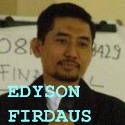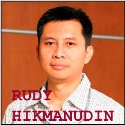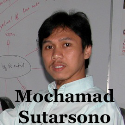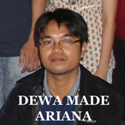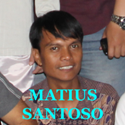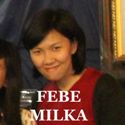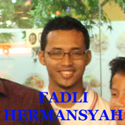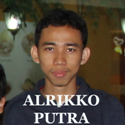4. THE PEOPLE HAT: UNDERSTANDING HUMAN BEHAVIOR
The people hat involves gaining an understanding of human behavior. The uniqueness of people needs to be taken into account in developing plans and in making decisions that involve people. Managers very quickly find themselves in a position to make decisions that have current as well as future consequences.
❑ Selecting the appropriate staff takes time.
It cannot be done in a perfunctory manner. Business success depends on professional competence coupled with well-developed non technical skills. Workload requirements cannot be met without the competencies required by defined purposes and objectives of the organization.
❑ Hiring the right people involves knowing the expectations.
The workload requirements, the expectations, the specific assignment, the complementary fit with the mix of people already in place, and potential assignments determine the type of person to be hired.
❑ Appraising employees and colleagues realistically requires judgment. Effective employee appraisal frustrates most managers. The options include the normal distribution curve, everyone’s a star performer, team appraisal, or individual performance. Personnel appraisal is serious business. You’re either building or destroying a career.
❑ Developing people competencies involves recognizing individual training needs.
Generalized programs where one approach fits all seldom provide real learning experiences. People are unique and need to be treated differently but above all don’t forget simple respect and courtesy. At the same time expectations must be continually raised and excellence in performance cannot be compromised. Adults are not children, so treat them as adults.
❑ Investing in people involves more than sending them to formal educational programs and providing additional perks.
The results of that education need to be applied. Investing your time to coach, educate, and provide direction may be far more important than formal programs.
❑ Tolerating mistakes that provide new learning cannot be avoided.
It’s not necessary to break out the champagne and celebrate mistakes but let’s learn from those costly mistakes. Creativity and innovation are fraught with false starts and mistakes that support the learning process as we enter the unknown. If mistakes were the exception rather than the rule, much of our effort could be diverted to develop a society where effectiveness, efficiency, and the economic use of resources would dominate our lifestyle.
❑ Listening is difficult.
It is especially difficult when so much of what we have to say is obviously of greater importance. Listening requires discipline. You cannot spend the day listening to people who have not given any thought to the message they wish to convey. Listening is a two-way street—listen, yes, but know when to ask that the thoughts be written and explored in depth before any further dialogue takes place.
❑ Developing people skills crosses through all disciplines.
Excessive praise or criticism often creates conflict. Praise that is specific and used judiciously can be a force for spurring on the group. But, avoid the generalities. Saying ‘‘Great job!’’ to John or Mary is often a meaningless gesture. Timely and constructive criticism of actions provides learning opportunities but such criticism should be done in private and not become personal.
❑ Welcoming new ideas or proposals determines the future of your unit. Insist that ideas be presented in writing. Ideas are plentiful but only of value if explored. Untested ideas remain in the bank of untested ideas—they don’t add value. Ideas presented in written form have a better chance for implementation. Writing forces thought, and thought clarifies and raises issues that need to be resolved.
❑ Saying no to a request may be the best answer.
Can you decide which requests you’ll answer? Unless you learn to decide which requests are valid and which can go unanswered you’ll be inundated with requests that you’re not able to comply with. There will not be enough time.
❑ Attending the organizational rituals provides an opportunity to gain a further understanding of how people communicate away from the workplace.
Attending them is not a matter of choice. Your presence will be expected. You owe it to your people.
❑ Understanding the culture allows you to accept it, move it in some new direction, and develop a totally new culture.
If you accept it, you share the good and the bad. If you move it in some higher level with minor changes you’ll probably face minor problems. If you choose to develop a totally new culture be aware that you need a new strategy and time to implement it with some changes in personnel. Culture affects your style of managing. An innovator cannot function in a brain dead organization. A plodder will not survive in an innovative organization, at least not for long.
Source : Gerard H Gaynor. 2004

![SEVEN MANAGEMENT HAT [5] The Action Hat](https://excellentbee.com/wp-content/plugins/wordpress-23-related-posts-plugin/static/thumbs/19.jpg)
![SEVEN MANAGEMENT HAT [7] The Business Hat](https://excellentbee.com/wp-content/plugins/wordpress-23-related-posts-plugin/static/thumbs/24.jpg)
![SEVEN MANAGEMENT HAT [2] The Direction Hat](https://excellentbee.com/wp-content/plugins/wordpress-23-related-posts-plugin/static/thumbs/26.jpg)
![SEVEN MANAGEMENT HAT [6] High-anxiety Hat](https://excellentbee.com/wp-content/plugins/wordpress-23-related-posts-plugin/static/thumbs/22.jpg)
![SEVEN MANAGEMENT HAT [3] The Leadership Hat](https://excellentbee.com/wp-content/plugins/wordpress-23-related-posts-plugin/static/thumbs/10.jpg)
![SEVEN MANAGEMENT HAT [1] Administration Hat](https://excellentbee.com/wp-content/uploads/2012/02/MP900422611-150x150.jpg)


 Posted in
Posted in  Tags:
Tags: 
